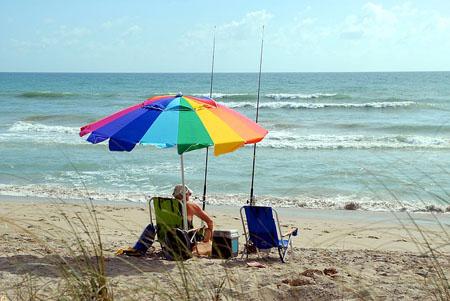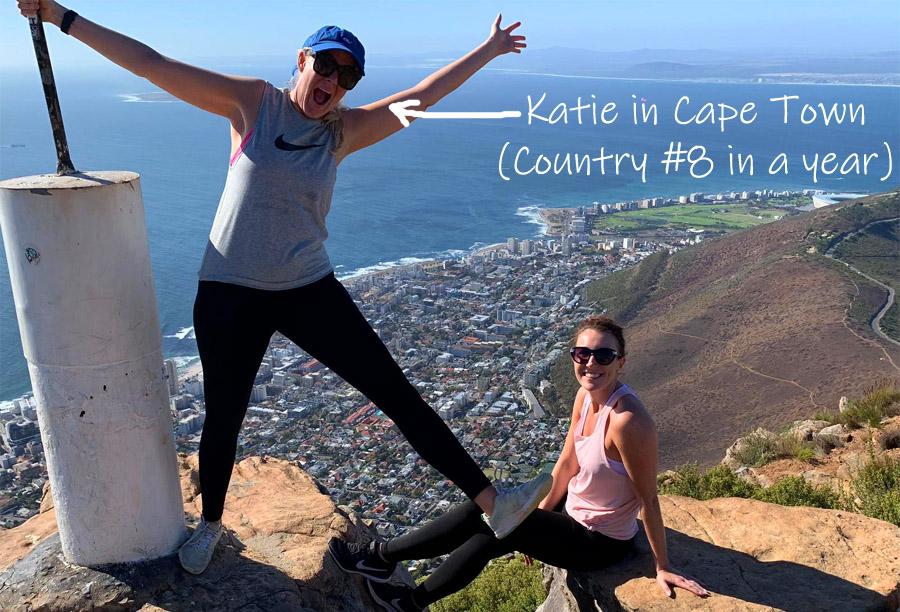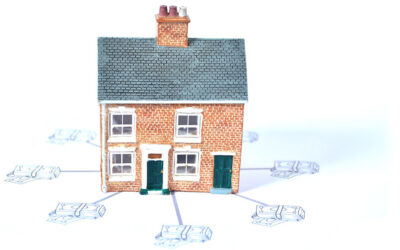
Much has been written about the stages of financial independence (FI) in an effort to define financial freedom and the milestones along the way.
These steps for financial freedom are easy to understand, if a bit harder to actually reach. The good news? It gets easier as you go. Like riding a bike, the first few pumps are the hardest.
As you plan your escape from the rat race, expect the following stages of financial independence.
Stage 1: Negative Net Worth (In the Hole)
Many of us start our journey below $0, with a negative net worth.
If you’re not familiar with how net worth is calculated, it’s simply the sum of your assets minus the sum of your liabilities (debts). If you owe more than you own, you have a negative net worth.
No bueno. But we all have to start somewhere. I’ve been there myself.
Whether it’s consumer debt, credit cards, student loans, personal loans, upside-down real estate investments, or other types of debt, you’re under water. That’s what comes of lifestyle creep and trying to keep up with the Joneses.
Consider it a one-way ticket to staying broke no matter how much you earn.
Stage 2: Financial Solvency
Once you realize you’re on the fast track to nowhere, you jump off the train.
You can then start building an emergency fund and tackling your high-interest debts. The next time you get hit with a surprise $1,000 car repair, it’ll still suck, but it won’t throw you into a panic. At this point, between your emergency fund and shrinking consumer debts, you’ll be able to absorb small financial shocks.
Word to the wise: you can supercharge your savings rate by house hacking. Check out this case study of how one man house hacked a duplex and covered his monthly payments with rent from his neighbor. Getting rid of your housing payment opens up lots of extra money to hit your financial goals faster.
Try the debt snowball method to knock out each debt one by one and build momentum as you go.
The higher your savings rate, the faster you’ll knock out your debts so you can proceed to the next level of financial freedom.
Stage 3: Financial Stability
Once you pay off all your unsecured debts, you’ve reached financial stability. You probably still have a mortgage loan in place, and perhaps a small car loan, but no high-interest loans.
By now, you’ve scaled your emergency fund to at least two months’ living expenses, and perhaps as many as 12 if you have unstable income or expenses. You can handle all the curveballs life throws at you, even if they still sting when they hit you.
At this point, you can put each paycheck’s savings toward investments rather than your emergency fund or paying off debts. This is where the fun really begins.
You can start investing for passive income from sources ranging from stock dividends to real estate crowdfunding to rental properties. If you need some fresh ideas, start with these passive streams of income from real estate.
Don’t ignore your retirement accounts either. If your employer offers matching contributions to your retirement plan, you effectively earn a 100% return instantly on your investments. But even if they don’t, consider maxing out your Roth IRA for tax-free compounding and withdrawals in retirement.
From here, you get to watch your net worth and passive income grow each month.
Stage 4: Halfway Point (Half FI/Coast FI)
You’ve calculated how much money you need to retire. You understand concepts like safe withdrawal rates and the 4% Rule.
When your net worth gets halfway there — what some FIRE pundits call “half FI” — you’ve reached the next milestone in financial freedom. As an aside, we use “FI” and “FIRE” synonymously, the latter standing for financial independence/retire early.
Despite how it may seem, you’re actually much closer than halfway there. Because each investment produces additional income and growth, it adds to the amount you can invest each month. These compounding returns mean it’ll probably only take you half as long to reach full financial independence as it took you to get where you are today.
In other words, if it took you ten years to reach half FI, it’ll probably only take you another five years to build up the other half of your target nest egg.
There’s another concept worth mentioning here, known as “coast FI.” Coast FI means that if you stopped investing today, you’d still be able to retire on time. The compound interest and returns on your investments would get you there on their own.
For example, if you have $500,000 invested and want to retire with $1 million, it will take you around seven and a half years to reach your goal if you earn 10% on your investments. That’s without you investing another cent.
Play around with this compound interest calculator to see just how powerful compounding is.
 Stage 5: Financial Security (Lean FI/LeanFIRE)
Stage 5: Financial Security (Lean FI/LeanFIRE)
When you can cover your basic living necessities with passive income from investments, working technically becomes optional. You wouldn’t be trippin’ the life fantastic, spraying champagne all over people at black tie galas, but you could survive without ever working another day in your life.
People in the FIRE community call this stage of financial independence “leanFIRE” or “lean FI.” For some, it’s the end goal. They don’t need trips to Europe or filet mignon dinners. They just want to live simply in a quiet corner of the world and do their own thing.
Most of us want more flexibility and “freedom” in our financial freedom, so we keep investing money. But if you don’t mind a modest lifestyle on a tight budget, this can serve as the end of the road for you.
As an additional thought, I’m a huge proponent of lifestyle design and using your passive income to help you change careers to something you love rather than tolerate. That could mean taking a huge pay cut to switch to a dream job, or it could mean starting your own business, or something else entirely. But when you can cover your basic monthly expenses with passive income, you have the freedom to quit your high-stress day job and never look back.
Stage 6: Financial Independence (FI or FIRE)
When you can cover all your living expenses — including discretionary expenses — with passive income from investments, you can retire without any loss of lifestyle.
Welcome to financial independence!
It doesn’t have to require passive income, either. You could simply reach a net worth that supports you, at whatever withdrawal rate (e.g. 4%) you decided on. A 4% withdrawal rate should last you at least 30 years, but if you want your nest egg to last longer, plan on a 3.5% withdrawal rate.
Reaching financial independence isn’t about getting rich. It’s about retaking complete control over your time. Most people who reach financial independence live a middle-class lifestyle, but they do work they love rather than slaving away in corporate hell.
Pursue financial independence to retire at 40, or at any age you like. Here’s how much you need to save to retire quickly.
Better yet, pursue FI as part of a larger effort to switch careers to do fulfilling work you love.
(article continues below)
Stage 7: Financial Freedom (Abundance/FatFIRE)
If financial independence lets you continue living your previous lifestyle without a job, financial freedom shoots the moon.
People sometimes use financial freedom and financial independence interchangeably, but the definition of financial freedom as I see it is a life with few fiscal limits. You can afford luxuries like traveling around the world and fine dining without a second thought. You can pay for your children’s education effortlessly.
While many financially free people still live a middle-class lifestyle, they don’t have to. They are wealthy, at least by conventional standards.
Some in the FIRE community refer to this as “fatFIRE” as opposed to leanFIRE. You can expect to live comfortably without another cent of active income.
The longer you keep working and investing, the fatter your nest egg and passive income grow. But don’t continue working a miserable job just to reach fatFIRE. By the time you reach half FI or leanFIRE, switch to work you love. From there, every day feels like financial freedom.
 Financial Freedom: Define Your Ideal Life
Financial Freedom: Define Your Ideal Life
As long as you’re working a job you don’t love, you’re running in the rat race.
The FIRE movement gets a bad rap because critics assume that followers just want to lie on a beach sipping margaritas for the rest of their lives. But they’re missing the point entirely: reaching financial freedom is about retaking control and putting yourself in a position to do meaningful work rather than drudgery.
Work that, let’s be honest, doesn’t always pay well. Or if you’re starting a business, that comes with risk. I know all too well how harrowing the lean first few years in business can be.
I challenge you to dream bigger than just retiring. What would your dream life look like? Your dream work? How would you change the world for the better, if you only needed half the income to keep living your current lifestyle?
As you start climbing the steps toward financial freedom, start actively creating your dream lifestyle. It took me years, but I eventually built several sources of active income that I can earn from anywhere in the world, on my own schedule. I spend ten months a year overseas, and the other two months visiting family and friends in the US.
All the while, I continue investing and growing my net worth and passive income.
The irony is that in designing your ideal lifestyle, you no longer want to quit and retire. You want to keep working forever, because you love what you do.
In other words, the value in financial independence and early retirement lies in the pursuit, not in reaching a target number.♦
What are your financial goals? How do you define financial freedom, and what stage of financial independence are you aiming for? Share your financial plans below!
More Real Estate Investing Reads:
About the Author

G. Brian Davis is a landlord, real estate investor, and co-founder of SparkRental. His mission: to help 5,000 people reach financial independence by replacing their 9-5 jobs with rental income. If you want to be one of them, join Brian, Deni, and guest Scott Hoefler for a free masterclass on how Scott ditched his day job in under five years.



























I was going back and forth on stage 1 and 2 for many years but I am financially literate now. I am about to be a father in a few months and I am happy to share that I’m now on stage 3! I’m aiming to reach financial freedom in 5 to 10 years for my family.
So glad to hear it Anthony, congratulations!
Thanks! I’m an avid reader of your blog and FIRE movement.
I’m happy to know that I only have to take few more steps to acheive Financial Freedom!
Glad to hear it Karen!
In that way, it felt easy to acheive! However, it’s just a matter of how determined, resilient, and resourceful we are to acheive Financial Freedom!
It’s not easy, but it’s worth it!
This is an eyeopener to me. I am also one of the few who strives financial independence and I find this wonderful!
Glad to hear it Beverly, keep us posted on your progress!
I’ve never aimed for financial freedom when I was young, wish I had come across the FIRE movement earlier. But it’s never too late. It’s all about strategy, dedication, and doing your due diligence.
Glad to hear you’re making progress toward financial independence now Rain!
Relatable and inspiring article. I’m a huge fan of lifestyle design!
Me too Wendy!